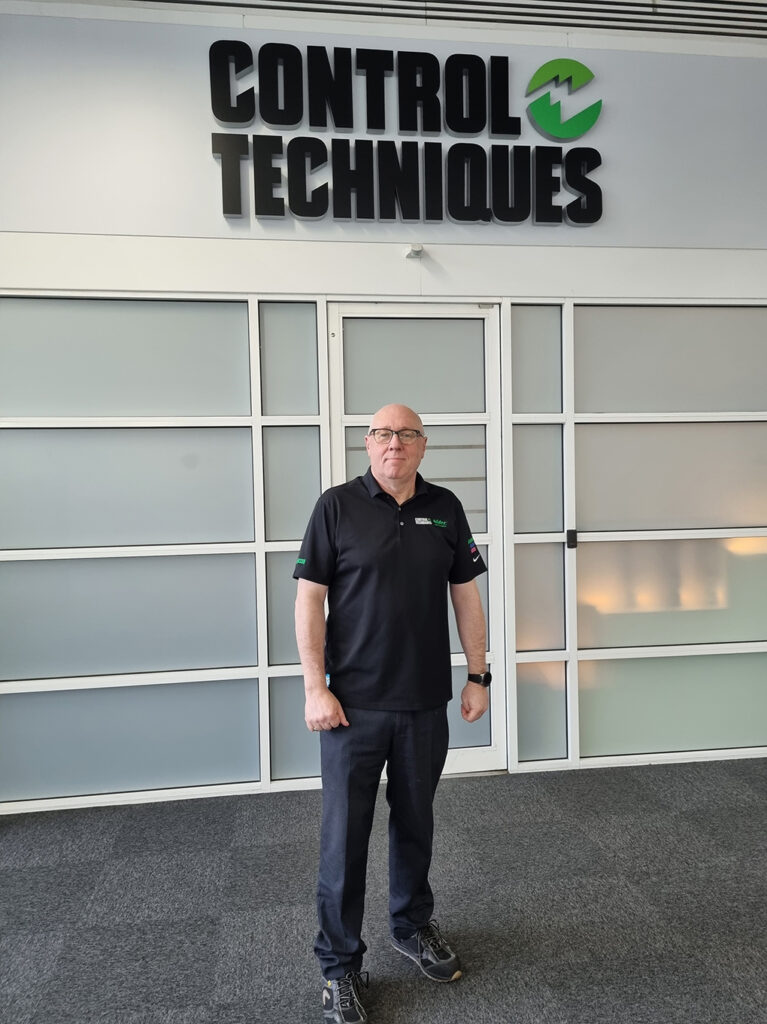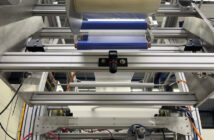Commit to one production facility and ship everything from there? Far too risky – that’s the thinking at Control Techniques. Until 2019, the company specialising in variable speed drives leaned mainly on production from the UK; now, it’s all about decentralisation. Production sites in the United States, Mexico and China have followed. And a new location in India is about to be added, intended to literally be closer to customers there too. ‘It’s about producing where we sell’.
‘There are plenty of reasons to go local’

Martyn Cray, vice president global operations at Control Techniques
For now, it is only about assembly. And manufacturing experience in the country itself is still lacking. Nevertheless, Martyn Cray, vice president global operations at Control Techniques, is confident about the new location in India. This was the last missing piece of the puzzle he says via an online video link from the company’s headquarters in Wales. ’True, we were already active in India with sales. But if we want to leverage our presence there, we need to support that with operations. We want to produce at the right time, at the right cost and with the shortest possible lead times. That is only possible by producing and assembling locally’.
Key regions covered
Control Techniques specialises in the development, production and distribution of variable speed drives. The company boasts a global network of 23 drive centres, including one in Sliedrecht. And it already had production facilities in the UK, North America, Mexico and China, as well as the new location in India. Together, Cray says, the five sites ensure that key regions worldwide are covered with local production. Quite a difference from only five years ago, it seems. ’Until 2019, we shipped around 70 per cent of all our products from the UK. It’s a model we changed between 2020 and 2023, with the move to multiple production sites. Back then it was all about a single central production facility, now it’s about producing where we sell.’
Reducing distance
Looking at the situation globally, decentralised production is the obvious choice for Control Techniques, Cray believes. ‘Take the markets in Mexico and North America, for example; together they make up about 25 per cent of our total sales. Customers can drop by our local production facilities, we have literally reduced the distances involved’. The development supports the company’s ambition of growing in every market, as Cray sees plenty of potential in its recent moves into India. ‘This is the moment for us. It’s a huge market, bigger than China. One of our customers is investing significantly there, it was up to us to follow. We will start with assembly, but if the volume grows then full production will eventually follow’.
‘Dependence on one region just doesn’t make sense’
In any case, the aim of being closer to the customer is the main driver, argues Cray. ’The customer gets the product faster and more cost-efficiently, that is paramount. But in addition, there are the lower labour costs. And local government support. There are plenty of reasons to go local.’
Standardisation is crucial
Although the five production facilities can operate independently, according to Cray, much revolves around the sum of the parts. Coupled with standardisation, which means, for example, having the same machines for PCB production everywhere. ’Suppose a lot of demand arises in Mexico for a product that we only make in the UK. Instead of shipping it, standard processes allow us to move quickly. And to create new opportunities for sales by being able to produce our entire portfolio anywhere in the world.’
Integrating continuity
Before joining Control Techniques, Cray worked in the automotive industry for many years. ’In that sector, multiple factories all make the same product and together they support each other. That provides continuity, which we are also committed to within our company’. Leading the way is the so-called 3Q6S system (Quality Worker, Quality Company and Quality Products) from electrical motors manufacturer Nidec, which acquired Control Techniques in 2017. The system is derived from that of Toyota and, according to Cray, has an effect on every production facility. ’Our UK location includes two plants close to each other. One focuses on assembling printed circuit boards, the other on assembling the final product. We wanted to speed up transport between the two sites, so we are close to completing a new conveyor system there. That will be completed shortly.’

Link magazine special 2024: The Dutch High-Tech Industry and the European Ecosystem: stronger together. Read this edition digital.
Preserving the balance
In India, the focus for now is on training the 30 employees so that they can handle the same processes as at the other sites. The location has a new production manager, who reports to the operations director based in China. ‘We want to move quickly towards the same quality in India, Cray observes. ’After which we will secure that standard and try to increase efficiency.’
The vice-president global operations emphasises that the success of standardisation hinges on getting the balance right. ’Production lends itself well to standardisation; for R&D, for example, it is much more difficult. After all, what customers want varies from region to region. A drive for a customer in India is not the same as in, say, Europe. That’s why we need to remain flexible enough. Ultimately, it’s still the customer who decides. If we forget that, we miss the boat. It’s up to us to avoid that.’
Only China? Not any more
Control Techniques launched its decentralised manufacturing strategy in early 2020. Almost immediately afterwards, the world was hit by the coronavirus. The global supply chain stalled, including for Control Techniques. To call that challenging would be an understatement, says Martyn Cray, vice president global operations. ’Yet we were able to respond quickly. All of our production facilities closed for a fortnight, then they were up and running again. And that’s with all the difficulties in the global supply chain, which for us is now functioning pretty much as normal again. Moreover, with the steps we have taken over the past few years, we have become less vulnerable.’ Ultimately, the model of manufacturing in China has its disadvantages, argues Cray. ’Dependence on one region just doesn’t make sense. Hence, we are focusing on local suppliers, close to our production processes.’





